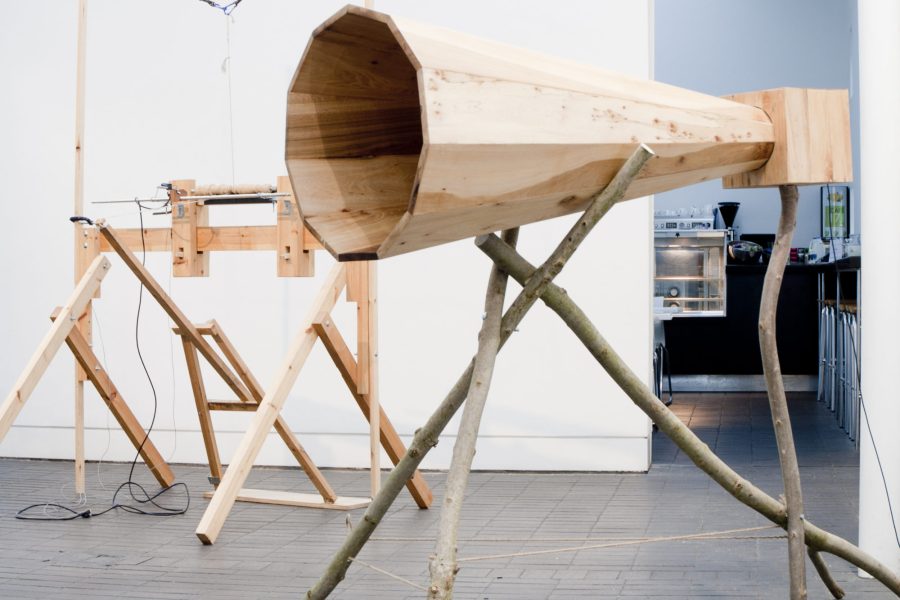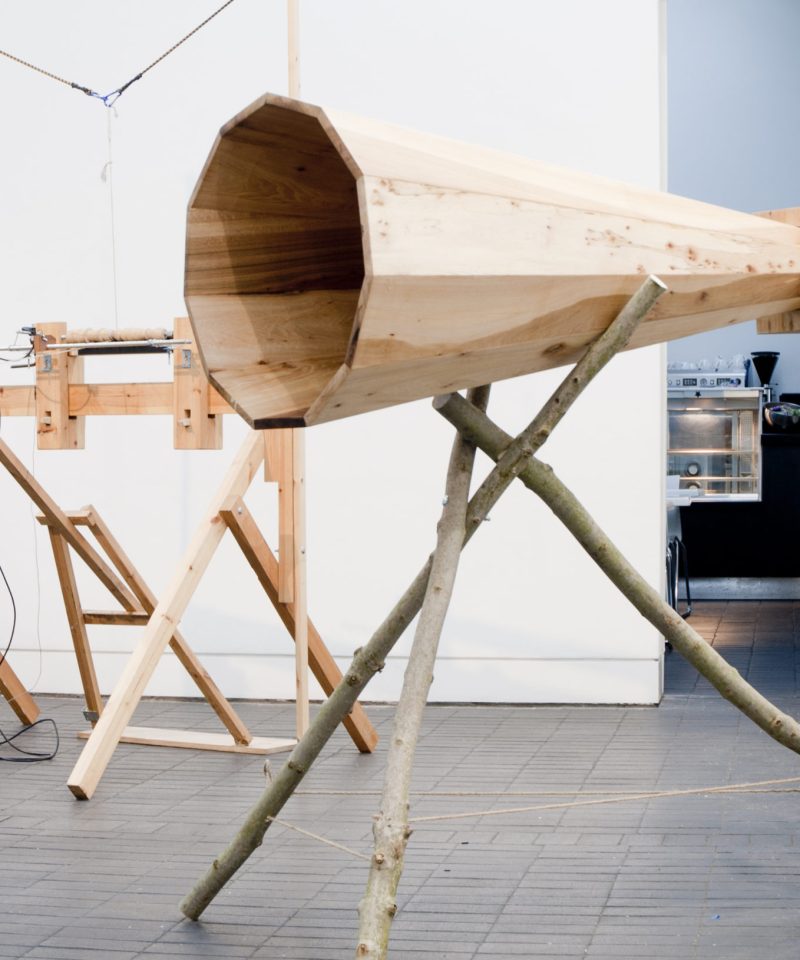The TERRA broadcast went out on Resonance FM this past Monday, a copy of which will be made available and posted here shortly. The hour-long broadcast went quickly, so in my final post on TERRA and as writer in residence, I wanted to draw out some of those things we ran out of time to discuss.
Following a discussion around the exhibition itself, we included several readings – from Gregory Bateson’s address to the 1967 Dialectics of Liberation Congress, in which he summarises his view of the ecosystem and human societies running in analogous tending-towards-balance fashions; from Robert Smithson’s essay A Sedimentation of the Mind, in which he discusses ‘geologic time’; from Jorge Luis Borges’ short story The Garden of the Forking Paths, which provided the inspiration towards Deleuze and Guattari’s use of the rhizome; a reading from the introduction to Deleuze and Guattari’s A Thousand Plateaus, in which they list the principles of the rhizome (“There is always something geneological about a tree. It is not a method for the people.”).
This was interspersed with the sounds of Tim Hecker’s Music for Tundra, alva noto, and from Bjork’s Homogenic album which involved sampling volcanic sounds for the production of the music.
With a few minutes left in the broadcast, we had a brief discussion of the ideas of Mexican thinker and filmmaker Manuel de Landa, who draws on Deleuze’s notions of machines to point out our distinctions between the organic and the inorganic; eg things like hurricanes are essentially an engine that occurs in nature, and these combinations occur in a non-linear fashion. There had been a few artists that I wanted to discuss on the show, to widen out the approaches set in TERRA, and this touched on the work of Carsten Nicolai, aka alva noto, in how his music and visuals look at patterns and systems, such as the images produced by cymatics – but in his work it appears more linear, or rather releasing to a process that doesn’t sound as nonlinear or random as de Landa makes it sound. Nicolai’s work is very much a cross over between art and science, that has a sense of finding the organic within the digital.
The people we didn’t get a chance to mention though, included artists like Rivane Neuenschwander, a Brazilian artist who employs a certain kind of chance poetry that doesn’t explicitly take on our relationship to nature, but maybe more takes it for granted, re-shapes it and reconstructs it and allows us to re-examine it that way. Several works enact their own form of continental drift, from water-filled bowl set afloat in a giant bowl of water, to styrofoam balls held in a tranluscent cieling that through random fans blowing come to form their own islands and landscapes. Her perspective is one like Smithson’s geologic time, observed at a minute level.
Another project was London-based artists Melanie Jackson’s Urpflanze project of ‘abstract gardening,’ taking off from Goethe’s imaginary plant that carries with in it all imaginary future plants to present an array of sculptures and drawings where the gallery is a sort of greenhouse-of-horrors, bacteria-like seeds propped up all around the room.
Irish artist Karl Burke works with sculpture, photography and sound, but was an example for me that kept popping up as his work very much feels like a present-day land art re-placed in the gallery space, as if pointing to something forgotten, left behind, but still resonating. His work seems reliant on natural spaces, drawing in forests with tape and wood then photographing it, but doesn’t make any bones about transferring that action to an art space – both the gallery and the forest become simply spaces we move within equally. When I proposed the radio program to him, he suggested playing this.
These are simply a few other practices I wanted to direct people towards, other tangents and angles on the TERRA ground. The exhibition will tour to the Grizedale forest centre in January 2012, which will undoubtedly change many of the sensibilities, weight and thrust of the works in the TERRA show, and I hope many of you get a chance to see it at both venues.
Thanks to those who have helped out, read and taken part in my posts the past few months, and thanks to the Jerwood team for this platform and all their kind support!
All the best – Chris Fite-Wassilak

